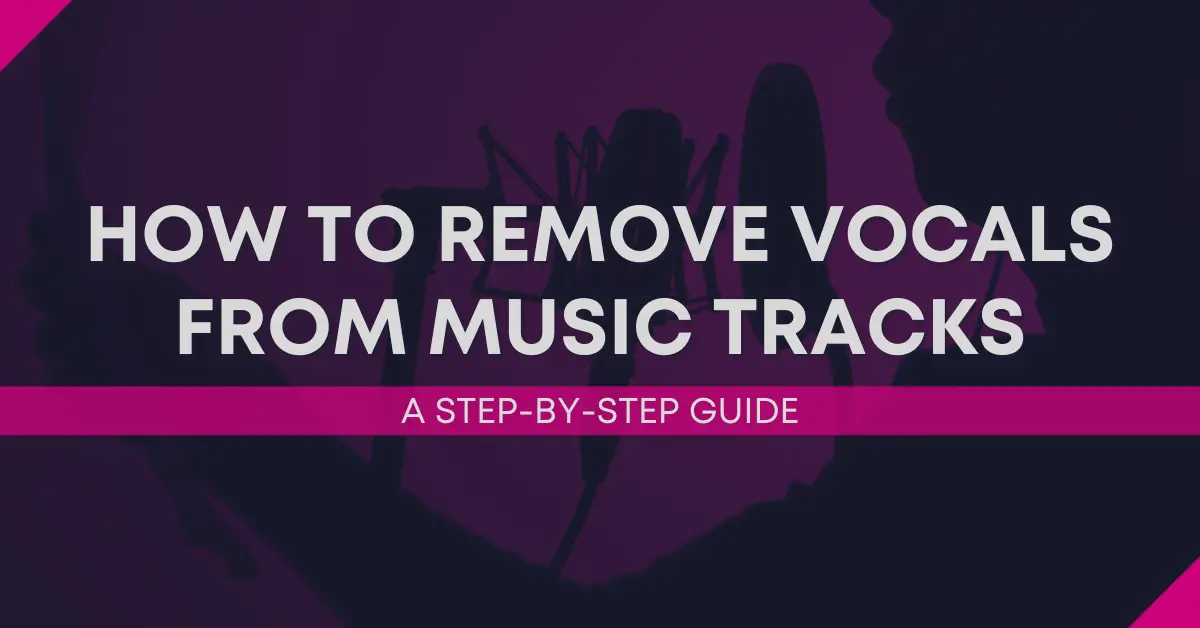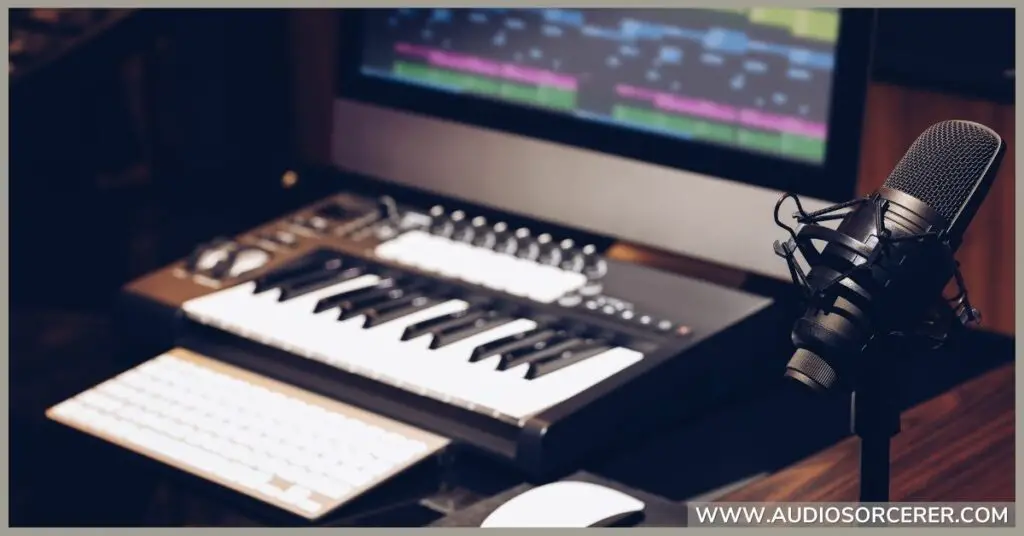
Removing vocals from music tracks allows you to create instrumentals or prepare songs for karaoke sessions. This process involves isolating and eliminating the vocal component without disrupting the quality of the underlying music. Various methods and tools exist to accomplish this, ranging from simple software solutions to more complex audio engineering techniques.
To begin, you need to understand that the quality of vocal removal often depends on the original track's mix. Vocals mixed centrally with minimal effects are generally easier to remove. You can employ audio editing software that uses algorithms to subtract vocal frequencies from the track. Such software typically offers preset options for vocal removal, which you can fine-tune to achieve better results.
For a more advanced approach, using a digital audio workstation (DAW) with multi-band equalizers and phase inversion techniques will give you greater control. This process requires a more hands-on approach, adjusting frequencies and balancing the stereo field to remove the vocal while retaining the integrity of the music. Regardless of the method, patience and careful adjustments are key to obtaining a clean instrumental version of a song. Read on to learn how to remove vocals.

Removing vocals from music tracks requires understanding the composition of songs and the technology used to separate vocals. Here, you will learn the essential concepts and techniques employed in vocal removal.
In a typical music track, you have two main components: the vocals and the instrumentals. Vocals are the parts of the song where the singer's voice is the primary focus. Instrumentals consist of the background music provided by various musical instruments and beats. When you want to remove vocals, your aim is to isolate and eliminate the vocal component, leaving only the instrumental parts.
The vocal removal process exploits the stereo (left and right channels) properties of audio tracks. Most vocal tracks are mixed in the center of the stereo field, allowing them to be subtracted from the total mix. This subtraction is achieved through a technique known as phase cancellation, where the same audio wave in opposite phases cancel each other out. Using software, you can invert the phase of one channel and combine it with the other, which significantly reduces the vocal sounds.
Various audio file formats exist, each with its own qualities. When working with vocal removal, you should be aware of the most common types:
Your song file choice can influence the effectiveness of vocal removal due to the different ways these formats handle audio data.

In order to remove vocals from music tracks manually, you need to understand the technical aspects of audio such as phase inversion and frequency isolation. Here are some techniques to achieve vocal removal with precision.
When using phase cancellation, you invert the phase of one element in a stereo track so that it will be cancelled out in the corresponding track. This method works great for extracting both vocals and instruments.
In most mixes, the vocal are panned right up the center. With the being said, we can modify the center channel to reduce the vocals in a mix.
The effectiveness of this method is dependent upon the vocals being mixed in the center.
Isolating frequency bands where the vocals lie allows you to reduce vocals in a track.
Note: Complete removal isn't possible and may degrade the overall track quality.

There are reliable software options that can help remove vocals from a song effectively. These tools utilize various processing techniques which can isolate the vocal components and allow you to extract or diminish them within a track.
Audacity is a popular, free open-source audio editing software that can facilitate vocal removal. You can access this feature in Audacity through the following steps:
File > Import > Audio…Effect > Vocal Reduction and Isolation…Other Audio Editors such as Adobe Audition and Reaper also provide similar vocal removal features, often with more advanced controls that may yield cleaner instrumental tracks.
Dedicated vocal removal software is explicitly designed to separate vocals from tracks. These programs usually offer a more user-friendly interface and superior algorithms for vocal extraction, leading to higher-quality instrumental outcomes.
| Software | Notable Feature |
|---|---|
| Wondershare Vocal Remover | Comes as both desktop software or online. |
| LALAL.AI | Uses Ai to split stems. |
| Vocal Remover Pro | Delivers both vocals and instrumental tracks separately. |
When you choose dedicated software, you should look for tools that specifically cater to your requirements, whether that's creating karaoke tracks or producing clear instrumental pieces for mixing and sampling.

In today's digital age, AI technology offers innovative solutions to remove vocals from songs with precision.
AI algorithms are at the heart of modern vocal removal technology. They function by analyzing the various sound waves within a track and identifying patterns specific to human vocals. Once detected, the algorithm can isolate these vocal frequencies and separate them from the accompanying music. Key aspects to understand include:
Selecting an appropriate AI vocal remover involves assessing several critical elements:
Advice: Our favorite artificial intelligence option is Wondershare Vocal Remover.
Below we've put together a list of issues you may experience. These issues will be different depending upon how the song was mixed, the format it is in, and other possible factors.
Removing vocals from music tracks serves specific purposes such as to make a karaoke version, an accompaniment, or instrumental mix for various uses. However, it is important to consider the legal framework surrounding the use of such tracks.
For creating a karaoke version of a song, you typically need a clean instrumental backing track without the vocal component. This allows singers to perform without competing with the original vocalist. Similarly, an instrumental version can be valuable for dancers, background music in venues, or simply for listeners who enjoy the music without vocals. These can also be great additions as a B-side on vinyl, digital releases, or special editions of singles, offering an alternative listening experience.
Removing vocals from music tracks and using the resulting instrumental or karaoke versions must respect copyright laws. Always ensure you have the right to alter and use the original track. For example, playing a karaoke track in a public venue typically requires a public performance license, regardless if it's a commercially available karaoke version or one you've created yourself. Unauthorized use could lead to legal actions, so you must obtain the proper licenses before distribution or public use.
To separate background music from the voice, you'll typically follow these steps: upload your track to a vocal remover tool, select the option to isolate vocals or background music, and then process the track. The software will then provide you with the separated audio.
Professionals use advanced techniques like phase cancellation and spectral editing to extract vocals. The process is meticulous, requiring the use of professional audio software like Adobe Audition or Pro Tools that allow for multi-track editing and precise frequency manipulation.
The most effective online tool for vocal removal without any associated costs is likely to be Moises Ai. With its user-friendly interface, you can upload your music tracks and it processes them to remove vocals, often with impressive clarity.
Yes, you can use an app like Vocal Remover for iPhone to isolate vocals from a song. Simply download the app from the App Store, upload the track, and use the app's tools to separate the vocals.
For Android devices, apps like Vocal Remover and Karaoke are dedicated to this purpose. These applications can be found on the Google Play Store and work by analyzing and processing the song to eliminate vocals.
As you've learn, there are several ways to remove vocals from a track. But, remember the quality and effectiveness of the result depend on various factors such as:
It's key to have realistic expectations about the process and to understand that it may not be possible to remove vocals completely without affecting other elements of the track. Here's a succinct recap of what's crucial:
Remember, even with advanced technology, completely isolating vocals from a mixed track is often challenging. However, with patience and the right tools, you can achieve a usable track for your karaoke nights, remixes, or samples. Stay updated with new software developments as technology is always advancing, offering more sophisticated solutions.
If you found this guide helpful, please consider subscribing to our blog for more music production tips, product reviews, and buying guides. Also, you can support new content by contributing to our tip jar.
"Some of the links within this article are affiliate links. These links are from various companies such as Amazon. This means if you click on any of these links and purchase the item or service, I will receive an affiliate commission. This is at no cost to you and the money gets invested back into Audio Sorcerer LLC."